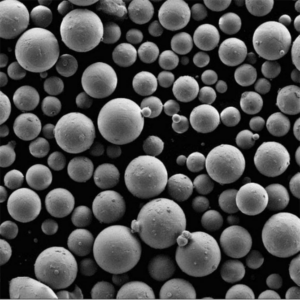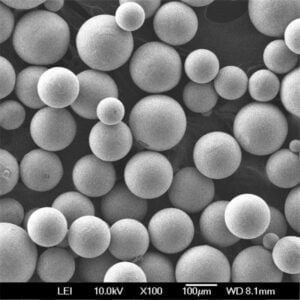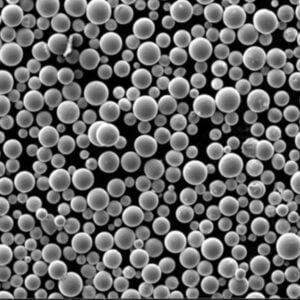
Spherical Boron Nitride Powder: Exceptional Thermal Management
Low MOQ
Provide low minimum order quantity to meet different needs.
OEM & ODM
Provide customized products and design services to meet unique customer needs.
Adequate Stock
Ensure fast order processing and provide reliable and efficient service.
Customer Satisfaction
Provide high quality products with customer satisfaction at the core.
share this article
Table of Contents
Overview of Spherical Boron Nitride Powder
In the world of high-performance materials, Spherical Boron Nitride Powder stands out as a revolutionary solution for industries demanding superior thermal management, electrical insulation, and durability. Whether you’re working on advanced electronics, thermal interface materials, or cutting-edge aerospace applications, spherical boron nitride (BN) powder delivers unparalleled performance. Its unique properties, such as high thermal conductivity, lightweight nature, and excellent lubricity, make it a top choice for a wide array of applications.
But what exactly is spherical boron nitride powder, and why is it so special? The answer lies in its spherical morphology, chemical stability, and unique thermal and electrical properties. Unlike its conventional counterparts, spherical BN powder offers better flowability, higher packing density, and uniform thermal distribution—qualities that are critical for modern engineering and manufacturing challenges.
This comprehensive guide will walk you through everything you need to know about spherical boron nitride powder, from its composition and properties to its applications, specifications, pricing, and advantages. By the end of this article, you’ll understand why this material is a game-changer for industries across the globe.
Types, Composition, and Properties of Spherical Boron Nitride Powder
Types of Spherical Boron Nitride Powder
Spherical boron nitride powder comes in various grades and formulations, each tailored to meet the specific needs of different industries. Let’s take a closer look at the available types:
| Type | Description |
|---|---|
| Standard Grade BN Powder | General-purpose powder with balanced thermal conductivity and insulation properties. |
| High-Purity Spherical BN | Features >99.9% purity, ensuring minimal impurities for sensitive applications like semiconductors. |
| Nano-Sized Spherical BN | Ultra-fine particles (<100 nm) for advanced coatings, thermal pastes, and high-precision uses. |
| Modified Surface BN Powder | Surface-treated particles for improved compatibility with resins, polymers, and adhesives. |
| High-Thermal Conductivity BN | Optimized for maximum heat dissipation, ideal for electronics and thermal management systems. |
| Lightweight Spherical BN | Reduced particle density for weight-sensitive applications in aerospace and automotive industries. |
Composition of Spherical Boron Nitride Powder
The performance of spherical boron nitride powder relies heavily on its chemical composition and purity. Below is a breakdown of its key components:
| Component | Proportion (% by Weight) | Function in the Material |
|---|---|---|
| Boron Nitride (BN) | 95% – 99.9% | Provides high thermal conductivity, electrical insulation, and chemical stability. |
| Trace Elements | ≤0.1% | Maintains purity and ensures consistent performance for demanding applications. |
| Surface Modifiers | Optional | Enhances compatibility with polymers, resins, or adhesives, depending on the specific use. |
Key Properties of Spherical Boron Nitride Powder
What sets spherical boron nitride powder apart from other thermal materials? Its unique properties make it indispensable for high-performance applications. Here’s a detailed look:
| Property | Details |
|---|---|
| Thermal Conductivity | Up to 400 W/m·K, making it one of the best materials for heat dissipation. |
| Electrical Insulation | Excellent dielectric strength, suitable for electronic and electrical applications. |
| Particle Morphology | Spherical shape ensures superior flowability and high packing density. |
| Purity Levels | Available in grades with >99.9% purity for advanced and sensitive uses. |
| Density | ~2.1–2.3 g/cm³, offering a lightweight yet high-performance solution. |
| Lubricity | Natural lubricating properties reduce wear and improve longevity in mechanical systems. |
| Chemical Stability | Resistant to oxidation, acids, and bases, ensuring reliability in harsh environments. |
Applications of Spherical Boron Nitride Powder
The versatility of spherical boron nitride powder makes it a key material across a range of industries. Its unique thermal, electrical, and mechanical properties enable it to excel in diverse applications, from electronics to aerospace.
Key Applications of Spherical Boron Nitride Powder
| Industry | Application |
|---|---|
| Electronics | Thermal interface materials, heat dissipation layers, and circuit board insulation. |
| Automotive | EV battery thermal management, engine components, and lightweight heat shields. |
| Aerospace | Lightweight thermal insulation and wear-resistant coatings for aircraft and spacecraft. |
| Renewable Energy | Heat dissipation in solar panels, wind turbines, and energy storage systems. |
| Advanced Ceramics | High-density ceramics for structural, electrical, and thermal applications. |
| Lubricants | Solid lubricants in high-temperature and high-pressure environments, reducing wear and friction. |
Example: Electronics Industry Applications
In the electronics industry, spherical boron nitride powder is a cornerstone for thermal interface materials (TIMs). These materials act as a bridge between heat-generating components (like CPUs or GPUs) and heat sinks, ensuring efficient heat transfer. Think about your laptop or gaming console—without proper thermal management, these devices would overheat and fail. Spherical BN powder ensures uniform heat dissipation, keeping devices cool and running smoothly. Its electrical insulation properties further make it ideal for applications in circuit boards and semiconductor packaging.
Specifications, Sizes, and Standards for Spherical Boron Nitride Powder
Choosing the right specifications for spherical boron nitride powder is crucial for meeting the unique demands of your application. Here’s a detailed breakdown:
Specifications and Sizes of Spherical Boron Nitride Powder
| Specification | Details |
|---|---|
| Particle Size Range | Available in <20 µm (fine), 20-50 µm (medium), and >50 µm (coarse). |
| Purity Levels | Standard grades at ≥95%; high-purity grades at ≥99.9%. |
| Shape | Spherical morphology for optimal flowability and packing density. |
| Compliance Standards | Meets ISO, ASTM, and RoHS (Restriction of Hazardous Substances) compliance standards. |
Suppliers and Pricing for Spherical Boron Nitride Powder
The global market for spherical boron nitride powder is competitive, with numerous suppliers offering tailored solutions. Pricing depends on factors such as grade, particle size, and order quantity.
Supplier and Pricing Information for Spherical Boron Nitride Powder
| Supplier | Region | Price Range (per kg) | Specialization |
|---|---|---|---|
| Advanced Materials Co. | USA | $400 – $1,000 | High-purity boron nitride powders for electronics and ceramics. |
| NanoTech Powders Ltd. | Europe | $500 – $1,200 | Nano-sized BN powders for thermal pastes and coatings. |
| Global BN Supplies | Asia | $300 – $800 | Bulk orders for automotive and aerospace industries. |
| Ceramic Innovations Inc. | Global | $450 – $1,100 | Specialized powders for aerospace and high-temperature applications. |
Advantages and Limitations of Spherical Boron Nitride Powder
Like any material, spherical boron nitride powder has its strengths and weaknesses. Understanding these can help you decide if it’s the right fit for your application.
Advantages of Spherical Boron Nitride Powder
| Advantage | Description |
|---|---|
| High Thermal Conductivity | Perfect for heat dissipation in electronics and automotive systems. |
| Excellent Electrical Insulation | Suitable for use in electronic packaging and circuit boards. |
| Lightweight | Ideal for weight-sensitive applications such as aerospace components. |
| Chemical Stability | Resistant to harsh environments, ensuring long-term reliability. |
Limitations of Spherical Boron Nitride Powder
| Limitation | Description |
|---|---|
| Higher Cost | High-purity and nano-sized grades can be expensive compared to other materials. |
| Specialized Processing | Requires advanced manufacturing equipment for certain applications. |
| Limited Availability | Custom grades may have longer lead times due to complex production processes. |
Frequently Asked Questions (FAQ) About Spherical Boron Nitride Powder
| Question | Answer |
|---|---|
| What is spherical boron nitride powder used for? | It’s used in thermal management, advanced ceramics, and electronics. |
| Why is the spherical shape important? | Spherical particles improve flowability, packing density, and thermal performance. |
| How much does it cost? | Prices range between $300 and $1,200 per kilogram, depending on specifications. |
| Is it suitable for additive manufacturing? | Yes, its flowability and thermal properties make it ideal for 3D printing applications. |
| Which industries benefit most from it? | Electronics, automotive, aerospace, and renewable energy are primary beneficiaries. |
Conclusion
Spherical Boron Nitride Powder is a revolutionary material that combines outstanding thermal conductivity, electrical insulation, and mechanical stability. Its unique spherical morphology ensures superior flowability, making it ideal for demanding applications in industries like electronics, automotive, aerospace, and renewable energy. Whether you’re designing a cutting-edge electronic device or enhancing the thermal efficiency of EV batteries, spherical BN powder is the material that delivers unmatched performance. Ready to take your projects to the next level? Choose spherical boron nitride powder and experience the difference!
Get Latest Price
About Met3DP
Product Category
HOT SALE
CONTACT US
Any questions? Send us message now! We’ll serve your request with a whole team after receiving your message.

Metal Powders for 3D Printing and Additive Manufacturing
COMPANY
PRODUCT
cONTACT INFO
- Qingdao City, Shandong, China
- [email protected]
- [email protected]
- +86 19116340731








